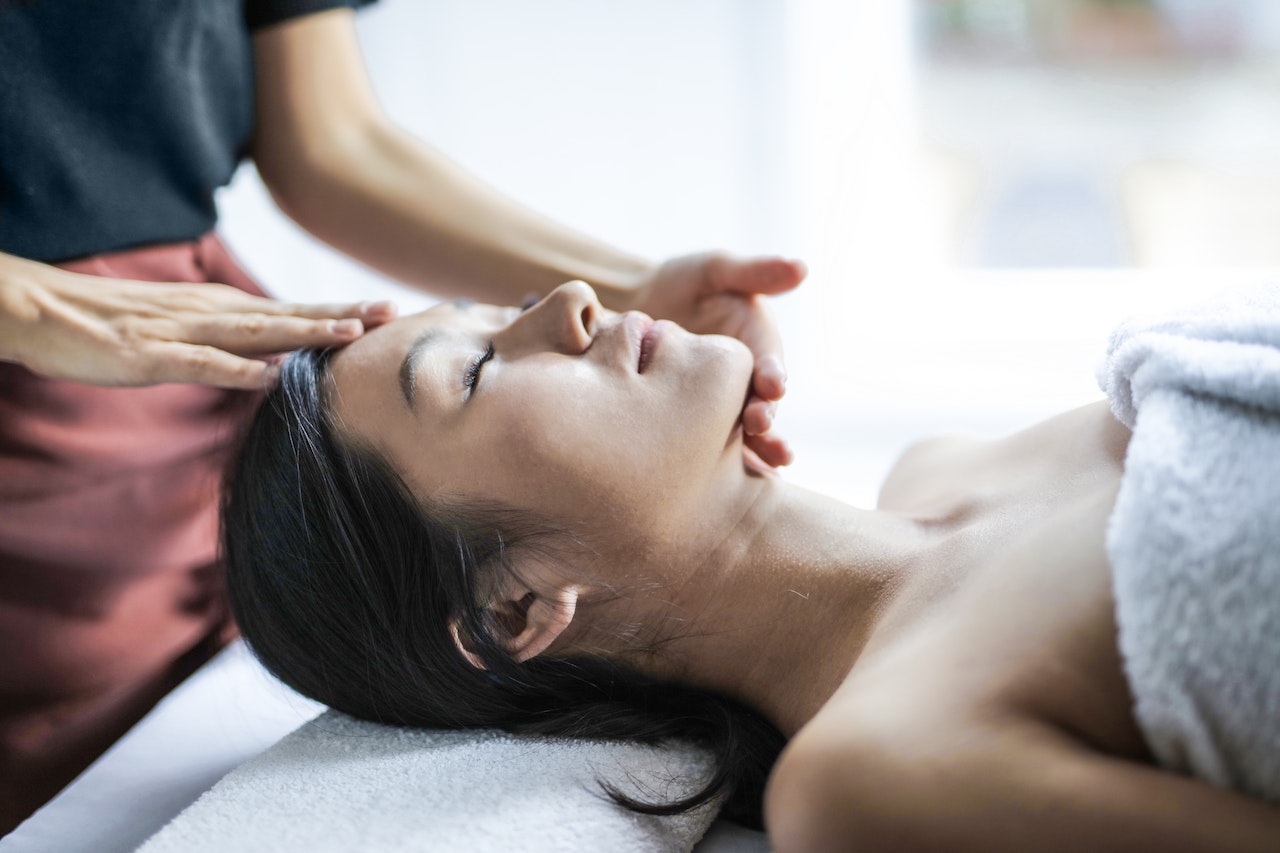Discover the ancient practice of Structural Integration for TMJ disorder and learn how to prepare for your initial session. Uncover the benefits of this holistic approach that focuses on realigning the body through deep tissue manipulation. By understanding what to expect in your first session, you can optimize the results and enhance your overall well-being. Dive into the history behind Structural Integration, a technique developed by Ida Rolf in the mid-20th century, aimed at improving posture and alleviating physical discomfort. Prepare to embark on a journey towards relief and improved jaw function with Structural Integration for TMJ disorder.
Preparing for Your First Structural Integration Session
Prepare yourself mentally before your first Structural Integration session. Take a moment to relax and set positive intentions for the experience. Visualize the session going smoothly and imagine feeling more aligned and relaxed afterwards.
Get ready to discuss your health history and goals with the Rolfer. Be honest about any past injuries, surgeries, or chronic pain issues you may have. This information will help the Rolfer tailor the session to your specific needs.
Wear comfortable clothing for ease of movement during the session. Opt for loose-fitting clothes that allow the Rolfer to assess your posture and alignment easily. Avoid tight jeans or restrictive clothing that may limit movement.
What to Expect in Your First Session
Initial Consultation
During your first Structural Integration session, you will typically undergo an initial consultation. This is where the Rolfer will gather information about your experience with TMJ disorder and any previous treatments you’ve tried. They may also discuss your goals for the sessions and what you hope to achieve through Structural Integration.
Physical Assessment
One crucial aspect of the first session is the physical assessment. The Rolfer will assess your posture, alignment, and how you hold tension in your body. Through various testing methods, they will identify areas of tension and imbalance that could be contributing to your TMJ disorder. This assessment helps them tailor the session to address your specific needs effectively.
Hands-On Work and Sensations
Once the initial consultation and physical assessment are complete, you can expect to move on to the hands-on work part of the session. During this phase, the Rolfer will use their hands to manipulate soft tissues in your body, aiming to release tension and improve overall alignment. You may experience a range of sensations, from pressure to stretching, as they work on different areas.
Client-Centered Approach
Rolfers often adopt a client-centered approach, meaning they prioritize understanding each client’s unique needs and adapting their techniques accordingly. This personalized approach ensures that the session addresses your specific issues and works towards achieving your desired outcomes.
Importance of Feedback
Feedback plays a crucial role in Structural Integration sessions. As a client, it’s essential to communicate openly with your Rolfer about any discomfort or sensations you’re experiencing during the session. Providing feedback allows them to adjust their techniques to ensure maximum effectiveness while keeping you comfortable throughout.
Integration of Movement
In some cases, Rolfers may incorporate movement exercises into the session to help reinforce the structural changes achieved through hands-on work. These movements can help you become more aware of how you hold tension in your body and provide tools for maintaining improved alignment between sessions.
Overview of the Structural Integration Ten Series
The Structural Integration Ten Series comprises ten sessions designed to systematically realign and balance the body’s structure. Each session focuses on specific areas, gradually addressing postural imbalances and releasing tension in the connective tissues.
In the initial sessions, Rolfers work on freeing restrictions in key areas like the feet, legs, pelvis, and spine. These sessions aim to enhance mobility, improve posture, and establish a solid foundation for further structural adjustments.
As the series progresses, Structural Integration practitioners delve deeper into the body’s core, targeting areas like the ribcage, neck, and head. These later sessions aim to promote better alignment, relieve chronic pain, and enhance overall well-being.
Structural Integration adopts a holistic approach that considers the interconnectedness of the body’s systems. Rather than merely treating symptoms, practitioners address root causes by integrating physical manipulation with client education and awareness.
By focusing on aligning the body structurally and energetically, Rolfers aim to not only alleviate immediate discomfort but also prevent future issues from arising. This comprehensive approach empowers clients to take an active role in their healing process.
Pros:
-
- Offers a systematic approach to address structural imbalances
- Promotes long-term relief by targeting root causes
- Enhances overall well-being through improved alignment and mobility
Cons:
-
- Requires commitment to complete all ten sessions for optimal results
- May involve temporary discomfort as the body adjusts to new alignments
The ten-session Structural Integration series aims to achieve structural integration by systematically addressing different parts of the body. Each session builds upon the previous one, creating a cumulative effect that leads to profound changes in posture and movement patterns.
Through this progressive approach, clients experience not only physical improvements but also emotional release as stored tension is released from the body. The holistic nature of Structural Integration ensures that clients undergo a transformative journey towards greater alignment and well-being.
Benefits of Structural Integration for TMJ Disorder
Improved Jaw Alignment
Structural Integration for TMJ disorder offers significant benefits in improving jaw alignment. Through targeted manipulation and bodywork, Structural Integration can help align the jaw properly, reducing strain and discomfort. This realignment can lead to decreased tension in the jaw muscles.
Pain Reduction
One of the key advantages of Structural Integration for TMJ disorder is pain reduction. By addressing the root causes of TMJ issues, such as muscle tightness and misalignment, Structural Integration can alleviate pain in the jaw area. Clients often report feeling relief from chronic discomfort after undergoing Structural Integration sessions.
Long-Term Symptom Relief
Individuals with TMJ disorder may experience long-term relief from symptoms through regular Structural Integration sessions. The holistic approach of Structural Integration focuses on restoring balance in the body, which can have lasting effects on TMJ symptoms. Over time, clients may notice reduced pain, improved jaw function, and increased overall well-being.
Enhanced Body Awareness
Another benefit of Structural Integration for TMJ disorder is the promotion of enhanced body awareness. By working with a skilled Rolfer, individuals can gain a deeper understanding of their body mechanics and posture. This increased awareness can help clients identify habits or movements that contribute to their TMJ issues and make positive changes to support long-term health.
Stress Reduction
Stress is a common trigger for TMJ symptoms, such as jaw clenching and muscle tension. Structural Integration sessions offer a holistic approach to stress reduction by releasing tension throughout the body. Clients often experience a sense of relaxation and ease during and after Structural Integration sessions, which can help alleviate stress-related TMJ issues.
Getting Ready for Your Structural Integration Journey
Prepare yourself mentally for your Structural Integration sessions by setting aside any preconceived notions and embracing the potential transformation. Understand that Structural Integration is a holistic approach that addresses not just physical but also emotional aspects.
Maintain an open mind towards the process, allowing yourself to explore new sensations and experiences. Embrace the idea of releasing tension and realigning your body through Structural Integration.
Emotionally prepare for your Structural Integration journey by acknowledging that it might bring up buried emotions or memories. Be willing to confront these feelings as part of the healing process.
Stay receptive to the emotional release that can accompany Structural Integration, understanding that it is a natural part of the body’s response to releasing stored tension.
Develop trust in your Rolfer’s expertise and guidance throughout the sessions. Understand that they are trained professionals who will support you through each step of your Structural Integration journey.
Commit to the process and trust in your Rolfer’s ability to facilitate positive changes in your body’s alignment and overall well-being.
Continuing Your Structural Integration Experience
Maintaining regular Structural Integration sessions is crucial for individuals seeking relief from TMJ disorder. By ensuring consistency in attending sessions, clients can experience gradual improvements in their symptoms.
Structural Integration practitioners often recommend a series of sessions to address the underlying causes of TMJ disorder effectively. Each session builds upon the previous one, progressively working towards restoring structural balance and alleviating discomfort.
Continuing your Structural Integration journey beyond the initial sessions can lead to significant long-term benefits. Ongoing sessions help reinforce the positive changes initiated during earlier treatments, promoting lasting improvements in jaw function and overall well-being.
Regular Structural Integration sessions not only target the symptoms of TMJ disorder but also address root structural issues that contribute to the condition. This holistic approach supports sustained relief and enhances the body’s ability to maintain optimal alignment.
Structural Integration plays a vital role in maintaining structural balance throughout the body, including the jaw area affected by TMJ disorder. By addressing postural imbalances and releasing tension in connective tissues, Structural Integration helps restore natural alignment and function.
The holistic nature of Structural Integration extends beyond symptom management, focusing on enhancing overall health and wellness. Through targeted manipulation techniques, Rolfers work to realign the body’s structure, improve posture, and promote greater ease of movement.
Conclusion
You’ve gained valuable insights into preparing for your first Structural Integration session to address TMJ disorder. Understanding the process, knowing what to expect, and recognizing the benefits can help you embark on this journey confidently. By following the guidelines provided, you’re ready to experience the transformative effects of Structural Integration on your TMJ symptoms. Remember, each session builds upon the last, so stay committed to the Ten Series for optimal results.
Take charge of your TMJ health today and schedule your first Structural Integration session. Your journey towards relief and improved well-being awaits. Embrace this holistic approach to healing and discover the profound impact it can have on your TMJ disorder. Your future self will thank you for taking this proactive step towards a pain-free life.
Transforming TMJ Disorder Management with Structural Integration: Achieve Jaw Harmony with MedicinEvolution’s Groundbreaking Approach!
Are you or someone you know struggling with the challenges of TMJ (temporomandibular joint) disorder, searching for relief from jaw pain, or aiming to enhance jaw function and alignment? MedicinEvolution is at the cutting edge of incorporating Structural Integration into TMJ disorder management and structural integration, offering individuals a pathway to optimal oral health and functional harmony. Through the powerful techniques of Structural Integration, MedicinEvolution directly targets the root causes of TMJ disorder, sparking a comprehensive healing journey. Say goodbye to the discomforts of TMJ disorder, including chronic jaw pain, difficulty chewing, and the uneven strain on your facial muscles—as MedicinEvolution tailors its approach to address your body’s unique needs, leading you towards significant relief and functional improvement. Their customized Structural Integration sessions are designed to navigate you through the limitations TMJ disorder imposes, unveiling your body’s full potential for movement and ease.
If TMJ disorder has been a source of constant pain, discomfort, or has restricted your jaw movement and overall quality of life, MedicinEvolution’s innovative method, blending Structural Integration with specialized techniques for TMJ care, is exactly what you’ve been looking for. Don’t let TMJ disorder dictate the boundaries of your oral well-being—take action and schedule your consultation with MedicinEvolution today! Embark on a healing journey with their Structural Integration-focused treatments and start progressing towards a more harmonious, pain-free, and functionally aligned jaw. Your body, now freed from the constraints of TMJ disorder, will embrace the remarkable transformation!





